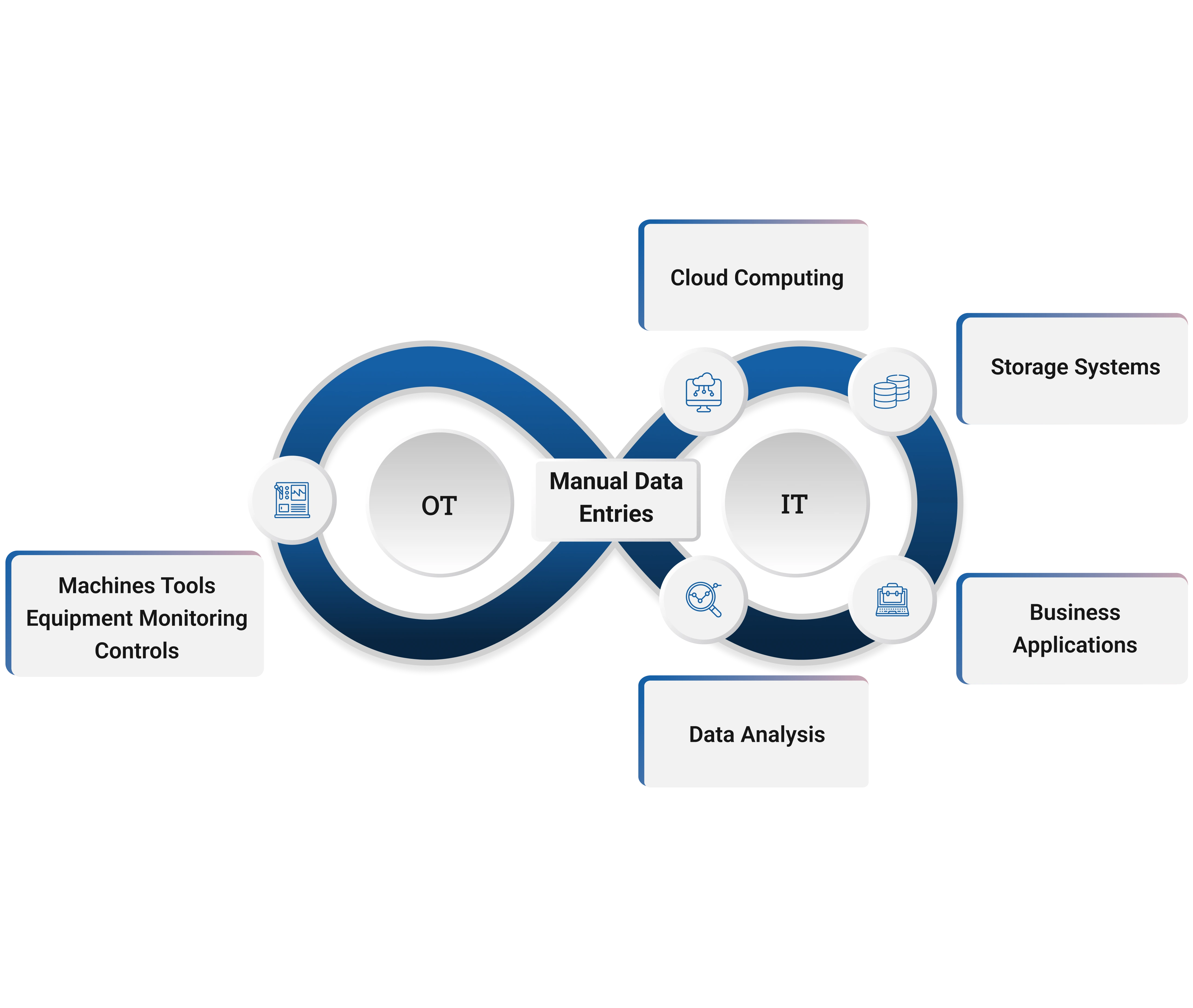What is IT (Information Technology)?
Information technology refers to the complete system encompassing Computers, Network connectivity, and the software that helps store, manage, and process data into information. IT also supports the security of the data at rest & transit and communication techniques used by the software to transfer data across multiple systems. IT provides the necessary algorithms for processing information automatically that help businesses - make decisions based on the data available. Irrespective of whether the system is onpremise or on the cloud, IT plays a critical role in enabling organizations to function effectively & securely in a day to day manner.
What is OT (Operational Technology)?

Operational Technology refers to hardware and software systems that monitor and control industrial processes, equipment, and infrastructure in real-time. OT plays a major role in industries like Manufacturing, Energy, Utilities, and transportation. The core components of OT Technology are Industrial Control Systems (ICS) , Programmable Logic Control (PLC), and Supervisory Control and Data Acquisition (SCADA) systems. OT does not do large scale data processing like IT. However, the role of controlling the process based on the incident that happens at that time ensures precision in a production cycle.















